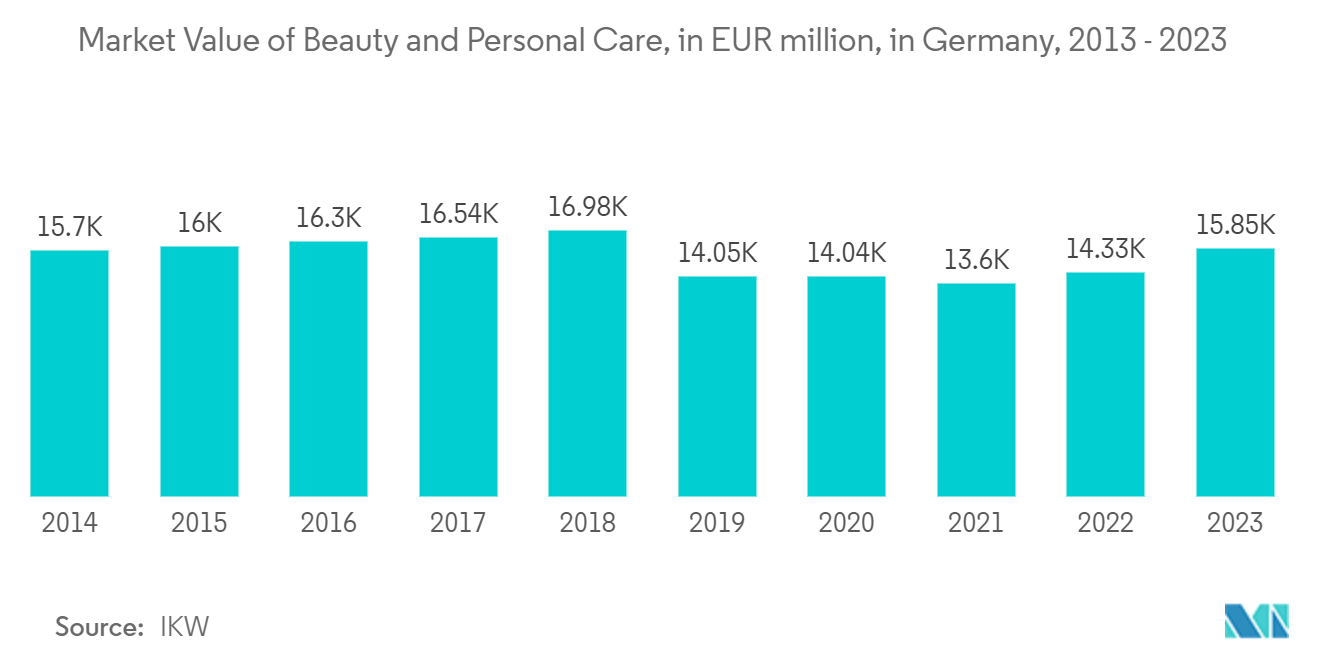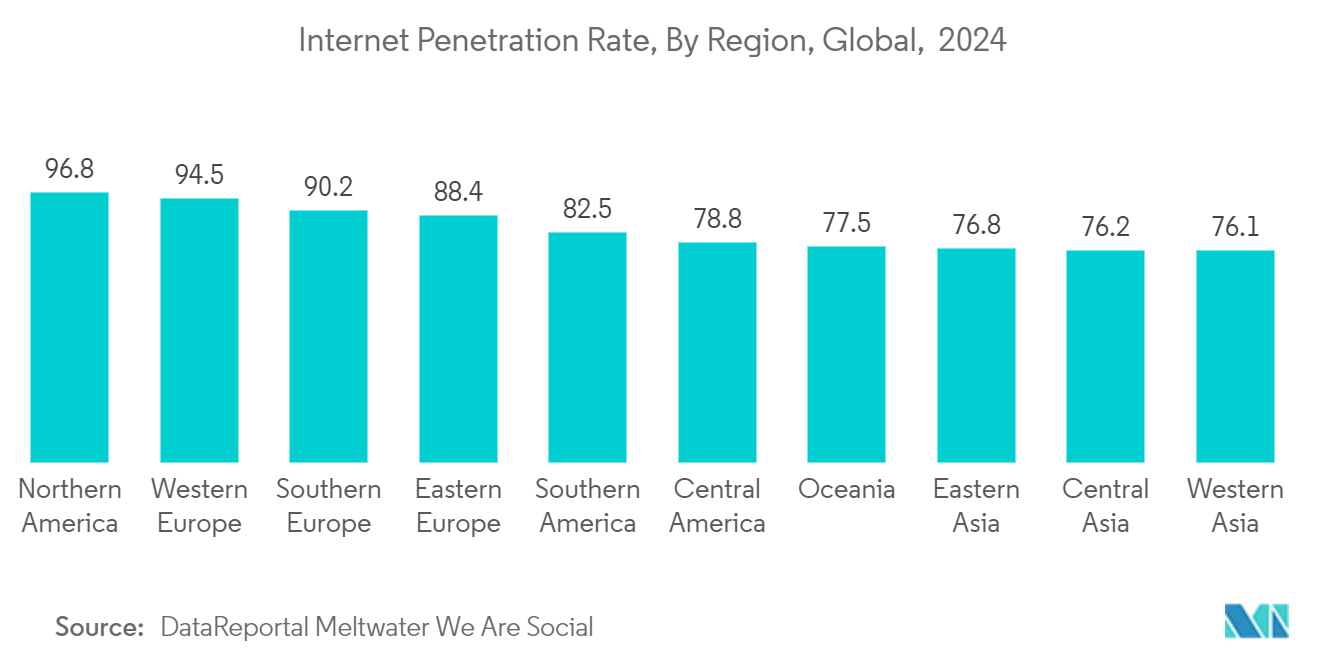Market Trends of Europe E-commerce Industry
Growing European Retail eCommerce Consumer
- Over the past few years, the beauty and personal care sector has experienced rapid growth. Once an industry only limited to physical stores, it is now taking over e-commerce with its websites, subscription boxes, social platforms, on-demand services, etc.
- Moreover, European consumers highly value cosmetic products and perceive them as essential in improving quality of life and boosting self-esteem and social interactions. According to Cosmetics Europe, 72% of consumers consider cosmetics and personal care products necessary daily.
- Consumers' increased health consciousness drives up demand for natural personal care products. Consumers are turning to organic personal care products in response to the rising demand for organic ingredients, which is expected to drive market growth during the study period.
- Further, for beauty brands, the power of influencers and micro-influencers will continue to grow and push the beauty space for many e-commerce companies.
- For instance, Amazon Influencer Program's influencers run their storefront pages with recommendations of "must-have" items. They use social channels like Instagram and TikTok to push their storefronts, providing beauty brands with a unique opportunity to uncover new product audiences.

Increasing Number of E-Shoppers in European countries.
- In recent years, e-commerce sales have been the primary growth engine in the retail sector. However, the European Commission reports that 75% of Europeans use the Internet daily. In comparison, only 15% buy online from another country, and only 7% of Small and medium enterprises sell cross-border.
- Furthermore, digital literacy and skills are also rising in Europe, with internet users increasing significantly in recent years. For instance, as per Eurostat, in 2022, the share of households in the EU with internet access rose to 93%, up from 72% in 2011.
- Clothing, electronics, communication products, and computers and their accessories, such as games and apps, are in high demand in the European e-commerce market. Products in these categories account for a significant share of all European e-commerce sales. Travel, footwear, household goods, and home and living items are profitable segments in the European E-commerce market.
- The rise in popularity of online marketplaces is one of the most notable trends in recent years. Europe has been slower to adopt marketplaces than the United States or China. Still, they are becoming an increasingly crucial online route of entry for brands worldwide looking to break into the European market.


